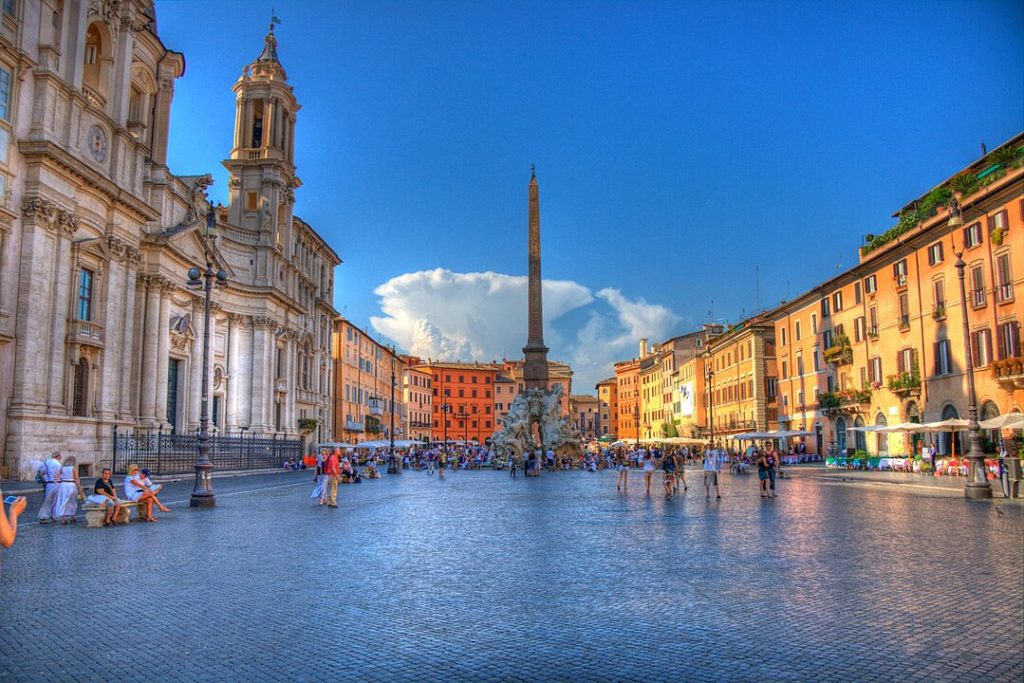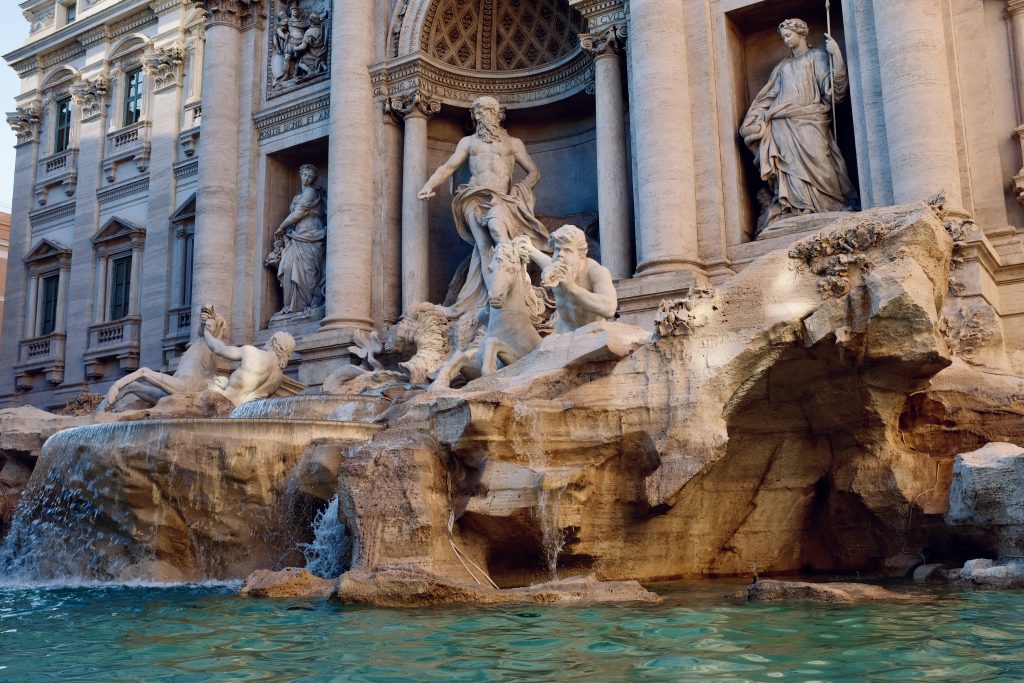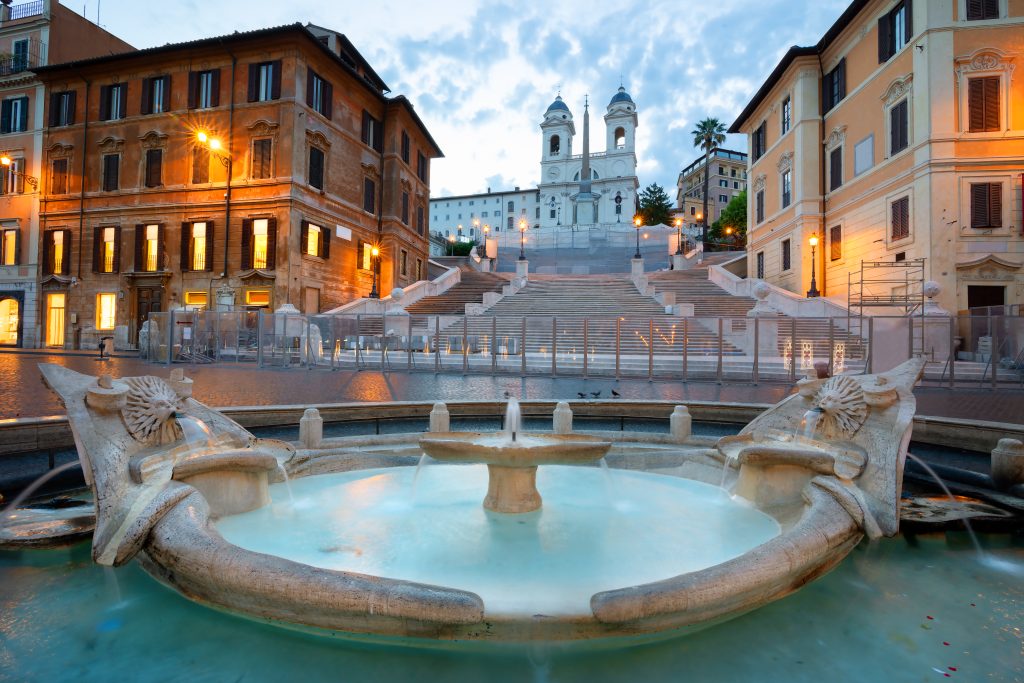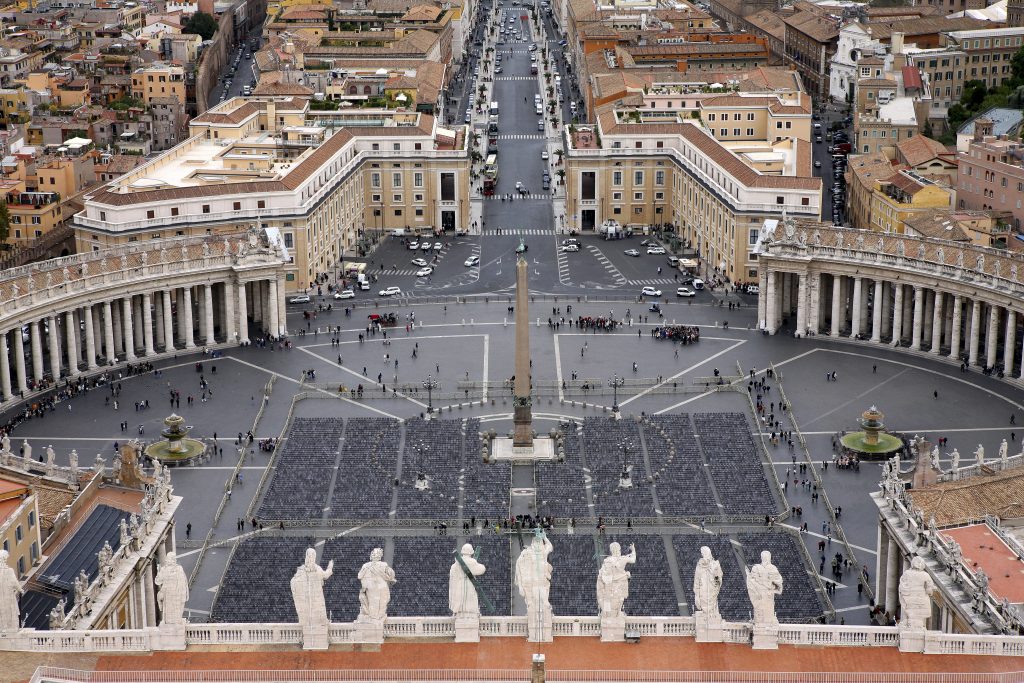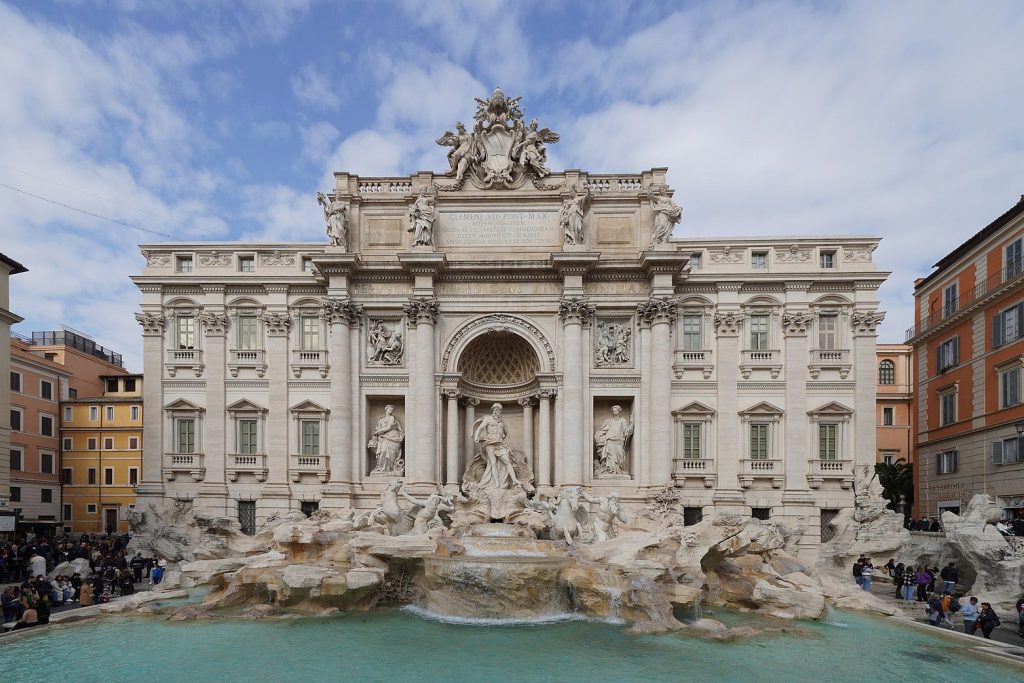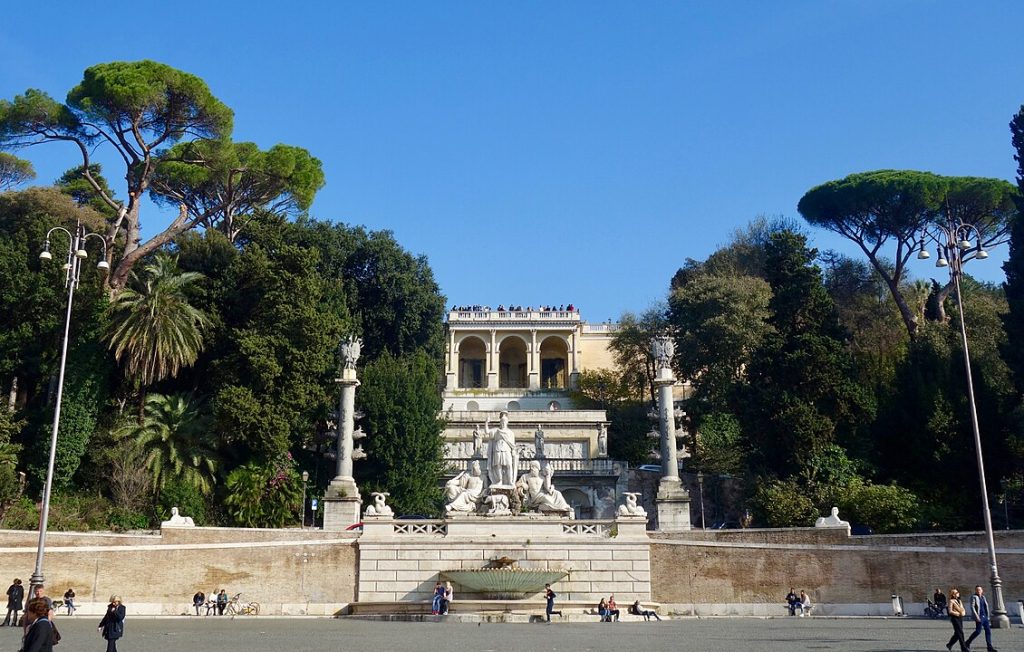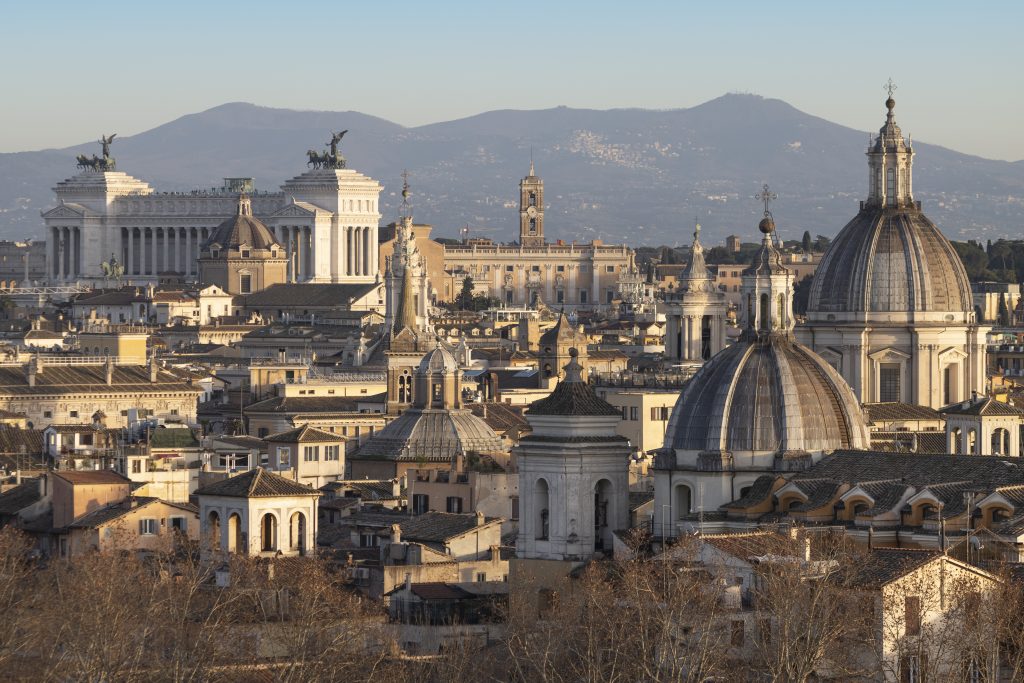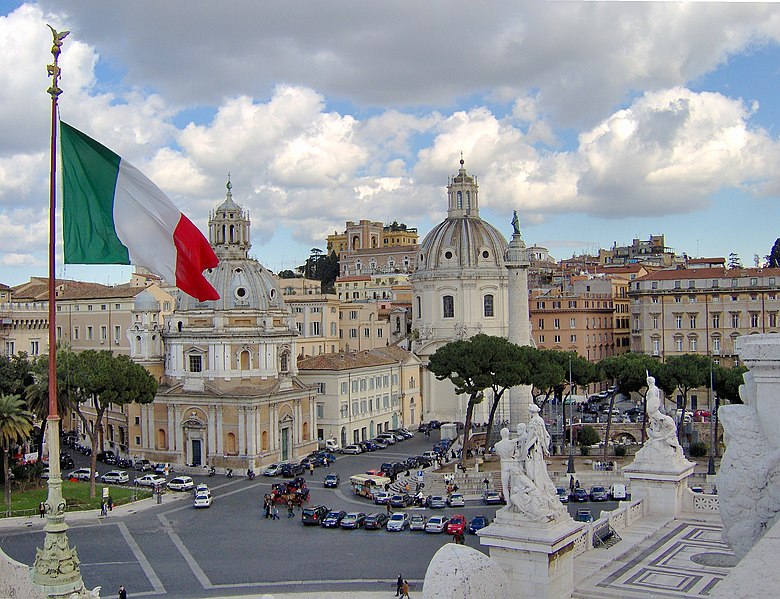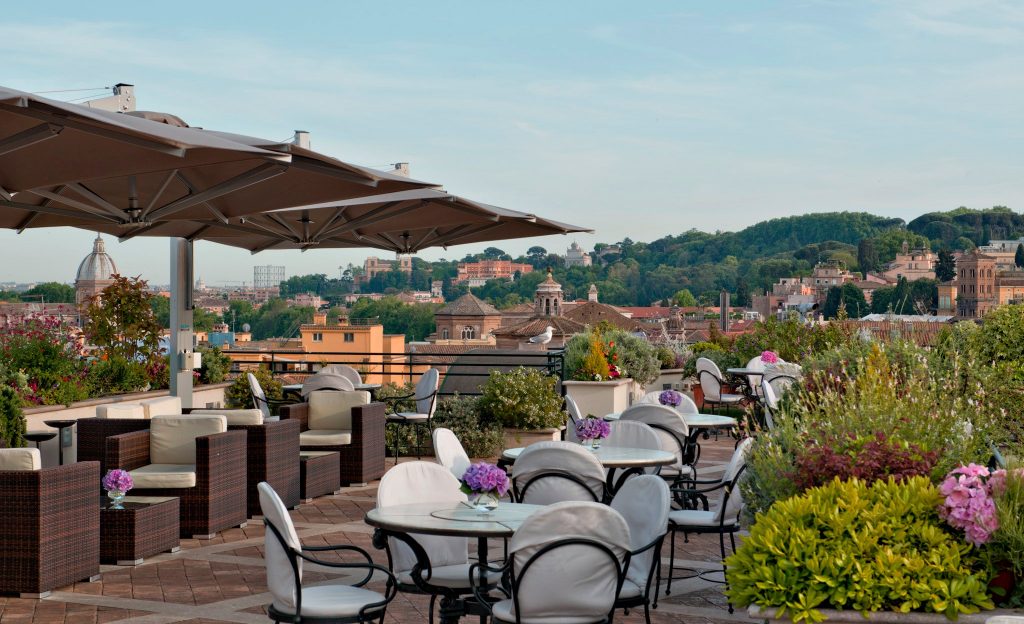- 1️⃣ Introduction - contrasts of Campo de' Fiori
- 2️⃣ Giordano Bruno and the square's dark past
- 3️⃣ Campo de' Fiori in the Middle Ages and the Renaissance
- 4️⃣ Trading Square - market, bustle and smells
- 5️⃣ Evening life - bars, trattorias and tourists
- 6️⃣ Architecture and plaza environment
- 7️⃣ Campo de' Fiori today - memorial or tourist attraction?
1️⃣ Introduction - contrasts of Campo de' Fiori
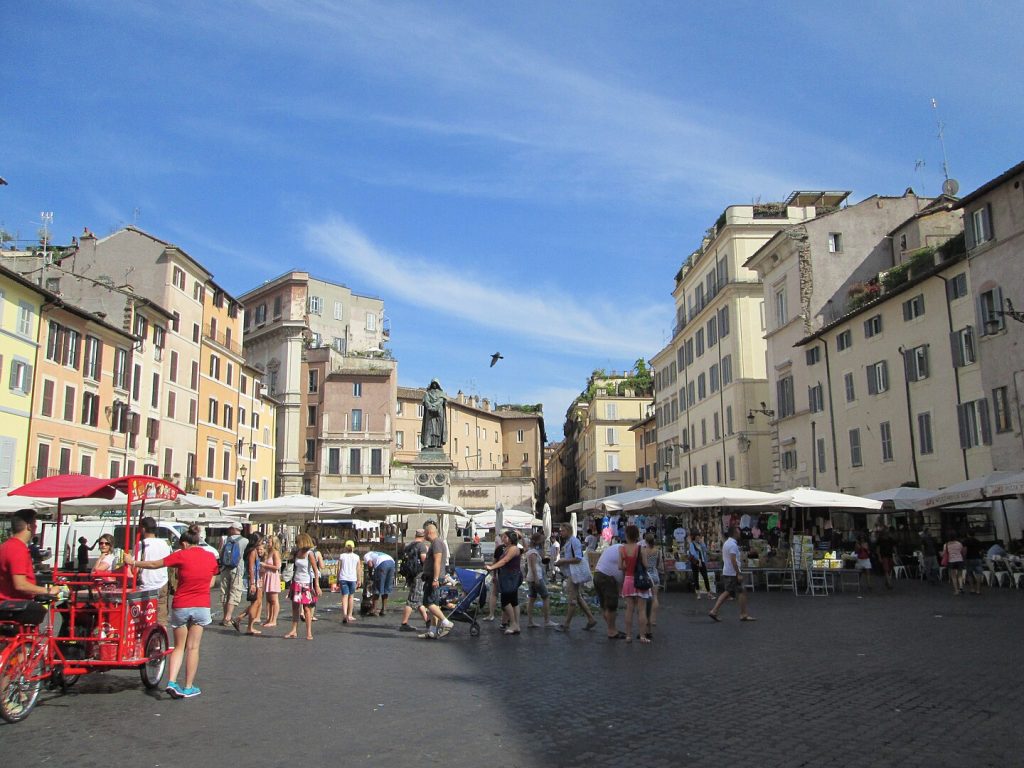
Campo de' Fiori is a place that is hard to pigeonhole. During the day it smells of fresh herbs, fruits and garlic from the neighborhood stalls. In the evening it resounds with laughter and conversations over wine. Yet underneath this idyllic image there is something more - a story that does not let you forget.
It is a square that smells of basil, but also the fire of the stack, on which Giordano Bruno was burned. There are no monumental temples or sculpted fountains here, but there are statue with lowered head, which looks toward the Vatican. Campo de' Fiori does not tell of the glories of emperors -. talks about freedom and its price.
It is this mixture - of ordinariness and tragedy, beauty and pain, everyday life and memory - that makes Campo de' Fiori a One of the most symbolic places in Rome. Here Rome speaks not through marble, but through smell, voice and shadow.
2️⃣ Giordano Bruno and the square's dark past
🏛 Want to discover more secrets of ancient Rome?
👉 The Colosseum - 10 fascinating facts about the symbol of the Eternal City
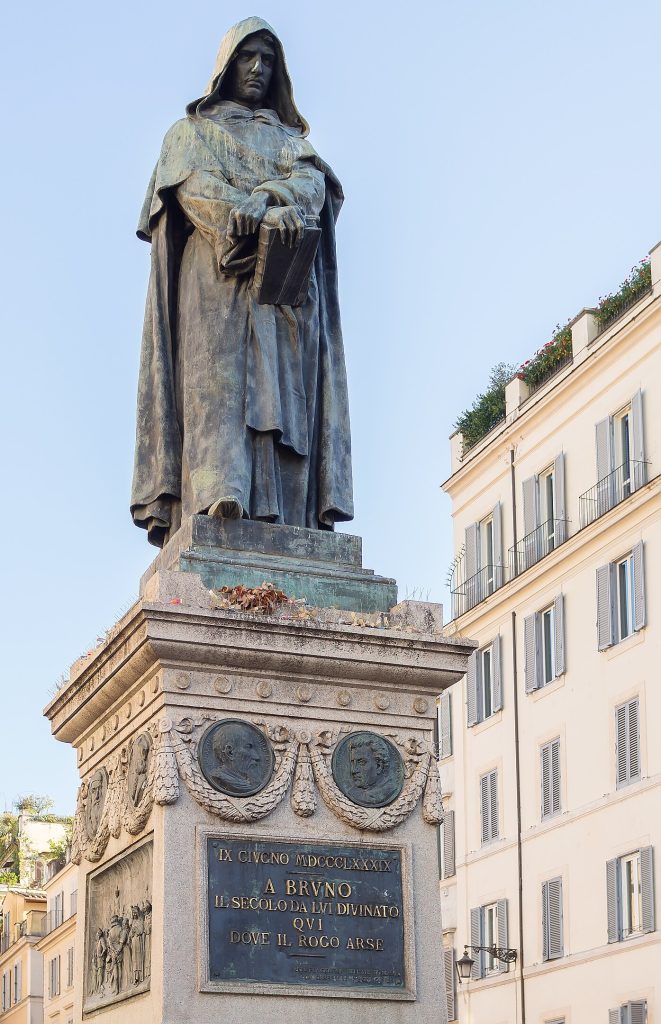
Although today Campo de' Fiori is associated with a colorful market and evening life, its past was not always so cheerful. The square was the place public executions, and the most famous victim became Giordano Bruno - A philosopher who paid with his life for freedom of thought.
💠 Who was Giordano Bruno?
Bruno was a Dominican, philosopher and astronomer. He preached ideas that were ahead of their time - including. infinity of the universe i plurality of worlds. Because of his views, he was accused of heresy by the Inquisition and after a seven-year trial -. condemned to death.
💠 Execution on Campo de' Fiori
In February 1600, a pyre was placed in the middle of the square, on which the Giordano Bruno was burned alive. Today in this place stands his monument - with a hood over his head, facing the Vatican - as a symbol of resistance to fanaticism and censorship.
💠 The philosopher's legacy
Today, Bruno is recognized for his martyr of free thought and science. His story reminds us that Campo de' Fiori is not only a charming place, but also a space of memory and reflection on the price of independence.
3️⃣ Campo de' Fiori in the Middle Ages and the Renaissance
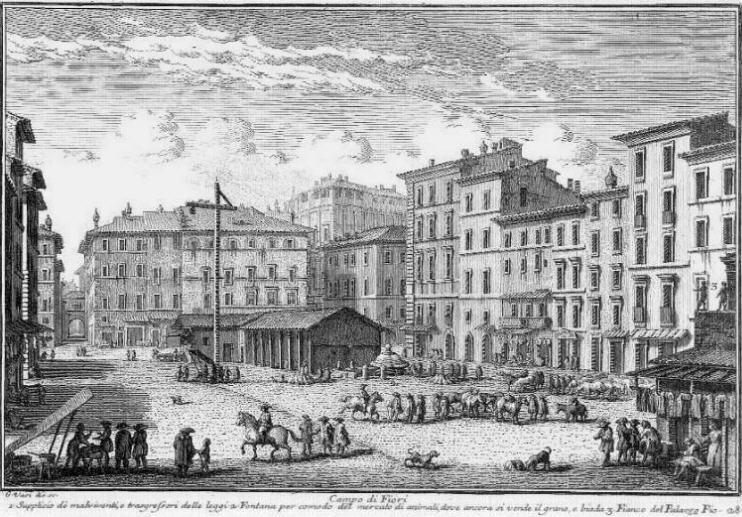
Before Campo de' Fiori became a market square and a meeting place, it was a very different space. muddy meadow Outside the walls of ancient Rome. The name of the square, which means "Field of Flowers", dates precisely from this period, when wild plants grew here and there was no development.
💠 From the meadow to the city square
During the Middle Ages, the area was gradually built up. Thanks to its proximity to important trade routes and its location between the Tiber and Campo Marzio, artisans, traders and ordinary residents began to settle here. The square has gained importance as a local center of commerce and daily life.
💠 Renaissance development and new meaning
In the 15th century, Campo de' Fiori began to be paved and delineated as a true city square. Around it appeared merchants' houses, workshops and inns, and the square itself also became a stage public events - From advertisements to courts to executions. It was here that a well-known printer lived Etienne Dolet, and craft guilds also had their headquarters.
💠 A place of contrasts
Even then, Campo de' Fiori was already combining the two faces - The bustling center of the commercial district and the space where the justice was enforced. This mix of functions has become a permanent part of its character.
4️⃣ Trading Square - market, bustle and smells
🎶 Looking for the magic of Roman evenings?
👉 Free concerts in Rome - music, atmosphere and unique venues
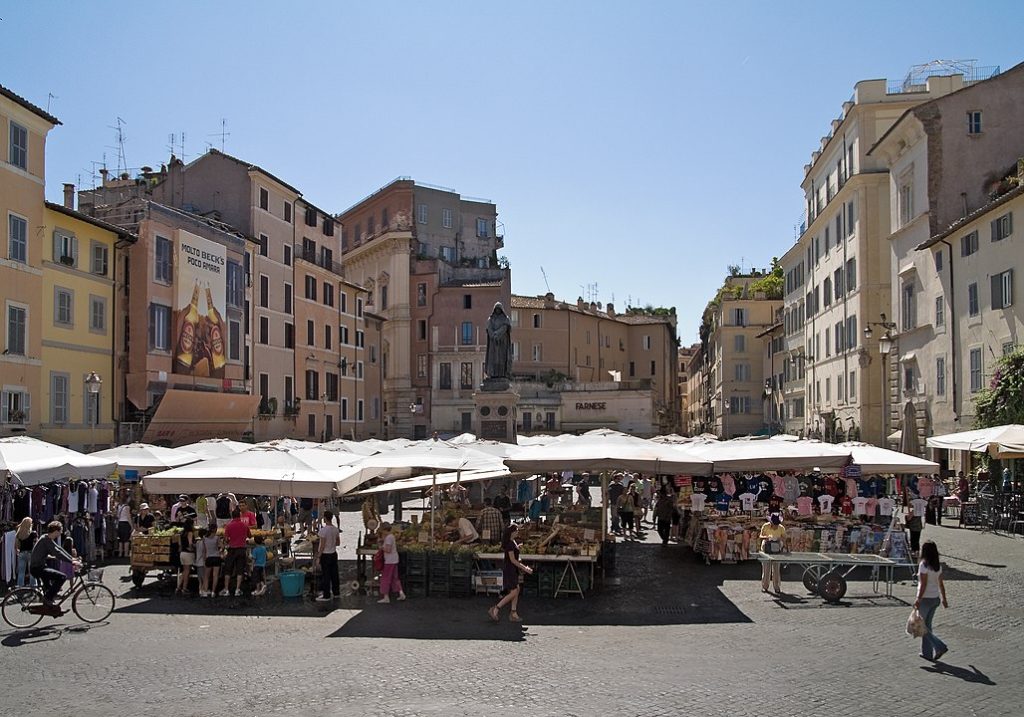
Today, it's hard to imagine Campo de' Fiori without the morning market - it's trading that has become the the heart and rhythm of this square. For centuries it has attracted merchants, farmers and locals who came here not only for fresh produce, but also for the latest news and gossip from the city.
💠 The daily ritual of shopping
Since the 16th century, the square has been famous for its vegetable, fruit and flower markets. Nowadays, from the early morning hours, Campo de' Fiori turns into a colorful marketplace full of aromas - fresh basil, ripe tomatoes, olives and Italian cheeses. This a vivid experience of the senses, which are hard to find anywhere else.
💠 Merchants, tourists and local gourmets
The market is meeting today tradition with modernity - In addition to elderly Romans buying herbs and fruits, you can find curious tourists looking for local delicacies or souvenirs. Vendors often have known their customers for years and are eager to share stories - about products, family, Rome.
💠 Not just shopping
Although the square serves a commercial function, it has also long been a meeting place. People come here for a coffee, a short chat, to observe daily life. Campo de' Fiori lives with its own rhythm - full of bustle, laughter, exhortations and the sound of moving vegetable boxes.
5️⃣ Evening life - bars, trattorias and tourists
🍷 Want to get a taste of Rome from a unique perspective?
👉 Restaurants and bars with a view - dinner with a panoramic view of the city
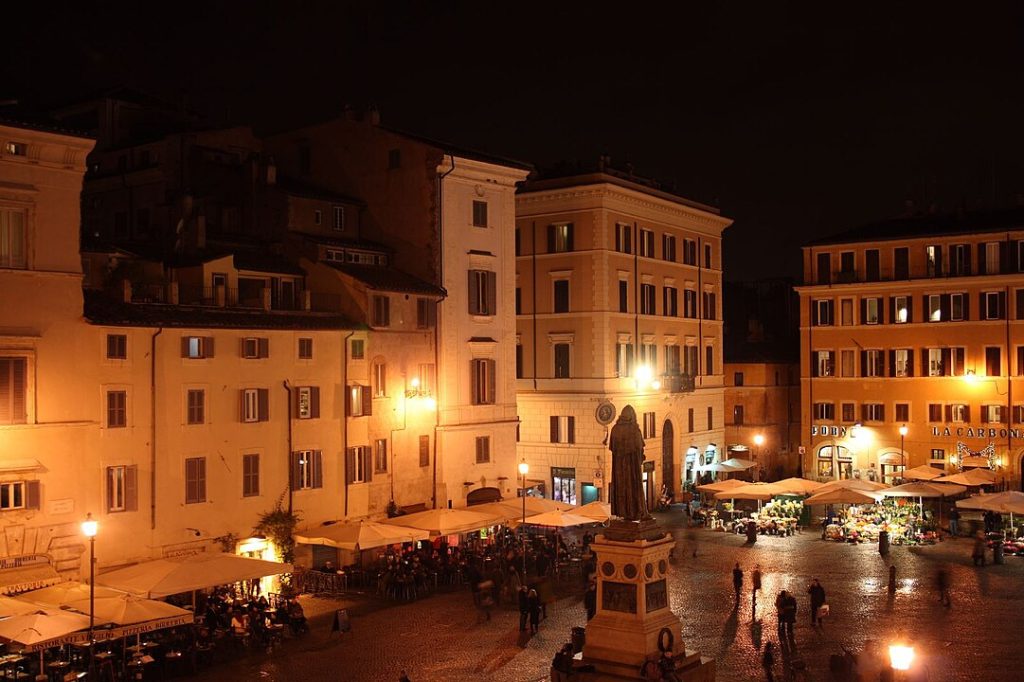
As dusk falls, Campo de' Fiori changes its face. The stalls disappear and the square is taken over by the nightlife - full of lights, conversations over wine and the sounds of music. It is one of the favorite places for evening gatherings - both for tourists and young Romans.
💠 From market to social hub
In the afternoon, the square is cleaned up and its space begins to be filled with tables from nearby bars and trattorias. It gets bustling, but unlike in the morning - now it is dominated by the relaxed, evening atmosphere, in which a glass of prosecco and a plate of pasta taste best.
💠 Bars with a view on history
On the Campo de' Fiori there are numerous cafes, pubs and restaurants, which offer not only food and drinks, but also unique atmosphere. As you dine al fresco, you sit next to a statue of Giordano Bruno, a symbol of free thought that reminds you that the square is not only about fun, but also about reflection.
💠 A tourist center, but with soul
Although many of the venues are geared toward tourists, Campo de' Fiori still manages to preserve the italian charm and authenticity. It's a place where you can spend an evening outdoors, listening to languages from around the world and watching Rome come alive - uninterrupted for hundreds of years.
6️⃣ Architecture and plaza environment
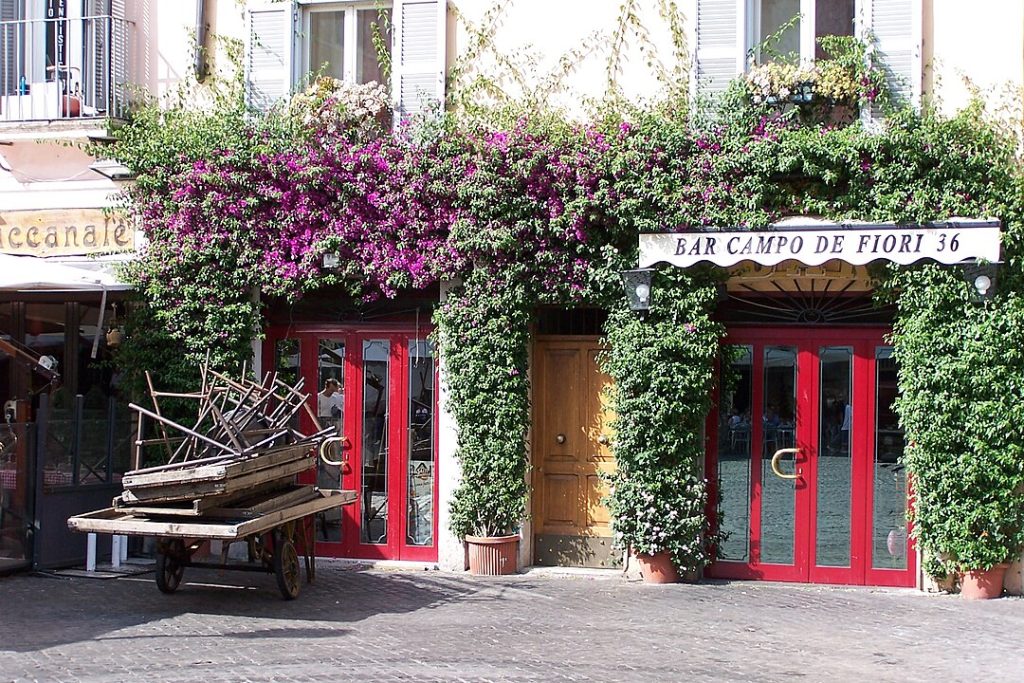
Although Campo de' Fiori does not impress with monumental buildings like the nearby squares of Rome, its the charm is in the details - the facades of the townhouses, the layout of the streets and the impression that everything here lives with its own rhythm, without exaggerated symmetry or plan.
💠 No classic axis
Unlike many Roman squares, Campo de' Fiori no central church or palace. It is an irregular space surrounded by residential and commercial developments. As a result, it preserves intimate, which attracts not crowds admiring the sights, but people who want to feel the city from the inside.
💠 Facades with history
The townhouses around the square are long-time witnesses of everyday life. Their facades are decorated with wooden shutters, flowers in pots and ornaments typical of Rome. Prominent among them are Palazzo della Cancelleria - Renaissance palace a little further on, which belonged to Cardinal Raffaele Riario, nephew of Pope Sixtus IV.
💠 A neighborhood full of contrasts
Right next to the square are other iconic Roman locations - Piazza Navona, Pantheon, Campo Marzio. Campo de' Fiori seems to be an enclave between the two - a rougher, truer enclave, less lavish, but full of soul.
7️⃣ Campo de' Fiori today - memorial or tourist attraction?
👨👩👧 Traveling with your family and looking for something for the little ones?
👉 Top 10 attractions for kids in Rome - fun and education in one

The contemporary Campo de' Fiori is a space full of contrasts - On the one hand, a bustling social and tourist center, on the other, a square that bears the the weight of history and symbolic meaning. What for some is an ideal place for aperol and selfies, for others is a an important place of remembrance and reflection.
💠 Square full of people, but also tension
During the season, Campo de' Fiori attracts crowds. Tourists are eager to visit the market, take photos at the Bruna statue, and spend their evenings at local establishments. But some residents and historians note that the Commercialization of the square shallows its meaning - This is especially recalled on February 17, the anniversary of Bruno's death, when modest celebrations are held in his honor.
💠 Monument as a remorse
The statue of Giordano Bruno, standing in the middle, is not just a decoration. His stern figure with his head lowered looks towards the Vatican, like a throwback. It is one of the few monuments in Rome that does not celebrate power but reminds of the price of independent thinking.
💠 Is it possible to reconcile the past with the present?
Campo de' Fiori is an example of a place that has to find the balance between being a authentic urban space, a historic symbol. Is it possible? Perhaps yes - as long as one remembers that behind the aroma of basil and a glass of wine is a story that still matters.
8️⃣ How to get there and when is the best time to visit?
Campo de' Fiori is located in the heart of Rome, making it a an easily accessible point For both tourists and locals. Depending on the time of day - and year - it can show a completely different face. So it's worth knowing, when and how best to experience it.
💠 Location and access
The square is located a few minutes' walk from Piazza Navona i Pantheon, in the Parione neighborhood. The nearest bus stops are Corso Vittorio Emanuele II (Lines 46, 62, 64, 916, among others). You can walk from the Vatican in about 15-20 minutes.
💠 Best time to visit
If you want to feel authentic atmosphere of the morning market, visit the square between 7 a.m. and 1 p.m. That's when it smells of basil, you can hear the shouts of vendors, and Campo de' Fiori appears as a a living part of everyday Rome.
In the afternoons, the square empties a bit, only to come alive again in the evening - this time as the center of the nightlife and culinary. If you value peace and reflection - visit this place outside the tourist season, such as autumn or early spring.
💠 Practical tips
Remember that in the square applies ban on eating on the steps of the monument, and city guards can intervene quickly. Also avoid crowds on weekend evenings - then Campo can lose its atmospheric.
9️⃣ Interesting facts and little known facts
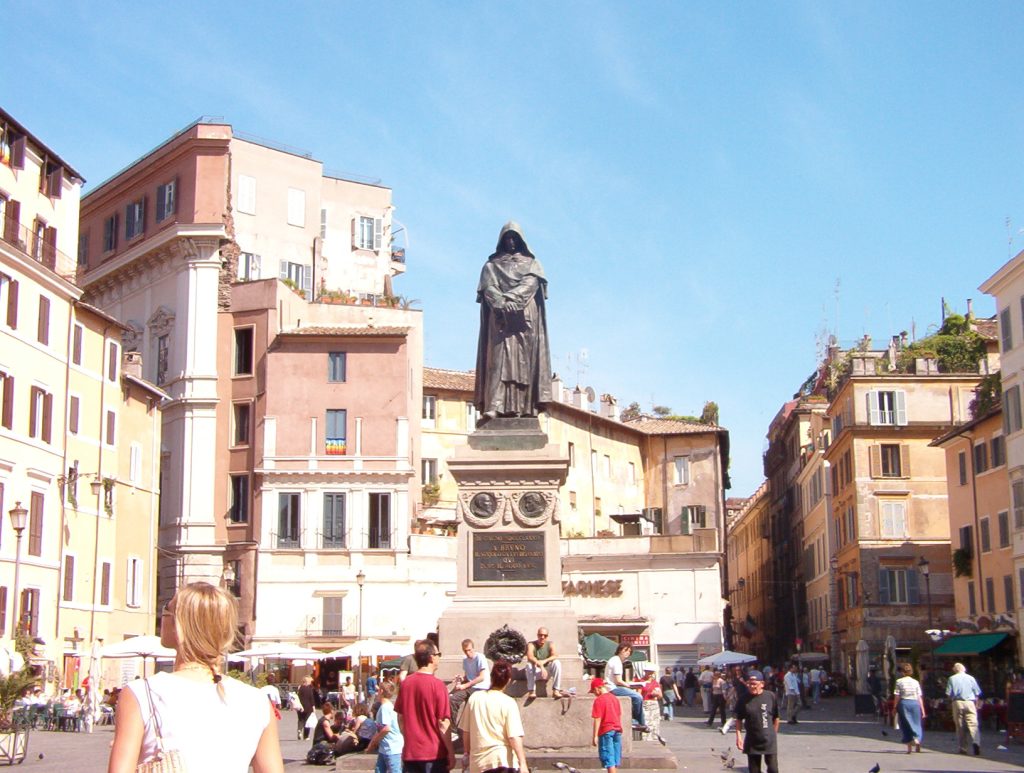
Campo de' Fiori is a piazza that, despite its small size. hides a wealth of stories, anecdotes and surprises. Although it seems familiar to anyone who visits Rome, many of its secrets go unnoticed at first glance.
💠 A square without a church - a Roman rarity
Most Roman squares have a dominant church. Campo de' Fiori is an exception - the no temple is located here, which makes it unusual for Rome and emphasizes its more secular, "street" character.
💠 It wasn't always peaceful here
In the past, Campo de' Fiori was known not only for its market, but also for its brawling atmosphere. In the 19th century, there were numerous brawls and petty crimes here, and some residents treated the place with suspicion. Today, only memories remain of this reputation.
💠 The Italian postal service had a point here
In the old days, there was a post, from which messages were sent throughout the papal state. This proves that Campo was an important transportation hub, not just a local market.
💠 Bruno's monument was created in defiance of the Vatican
When Roman authorities planned to erect a statue of Giordano Bruno in the 19th century, the Vatican strongly protested. However, the monument was unveiled in 1889 as a a manifesto for secularism and free thought, which caused a huge controversy at the time.
💠 Campo in literature and film
The square appears in many Italian and foreign works - from historical novels to movies. In one of the scenes of the film "Eat, Pray, Love," Julia Roberts is just walking along Campo de' Fiori, trying to "taste life."
1️⃣0️⃣ Summary - a symbol of free thought and Italian everyday life
Campo de' Fiori is a more than just a square. It is a space in which everyday life intertwines with history, and the smell of fresh basil mixes with the shadow of the past. On the one hand - a colorful market, noisy bars, bustle and taste of Roman life. On the other - a place where a pyre was burning, and the statue of Giordano Bruno is a reminder of the valuing freedom of thought.
It is these contrasts that make Campo de' Fiori so special. You can come here for tomatoes and stay for a philosophical reverie. Sit down for a coffee, and next door - stumble upon a story that changed the world. Campo does not pretend to -. is real, alive and sincere, exactly like Rome, of which it is the heart.
If you want to understand Rome - its beauty, its contradictions, and its soul - you can Campo de' Fiori is the perfect place to start.

